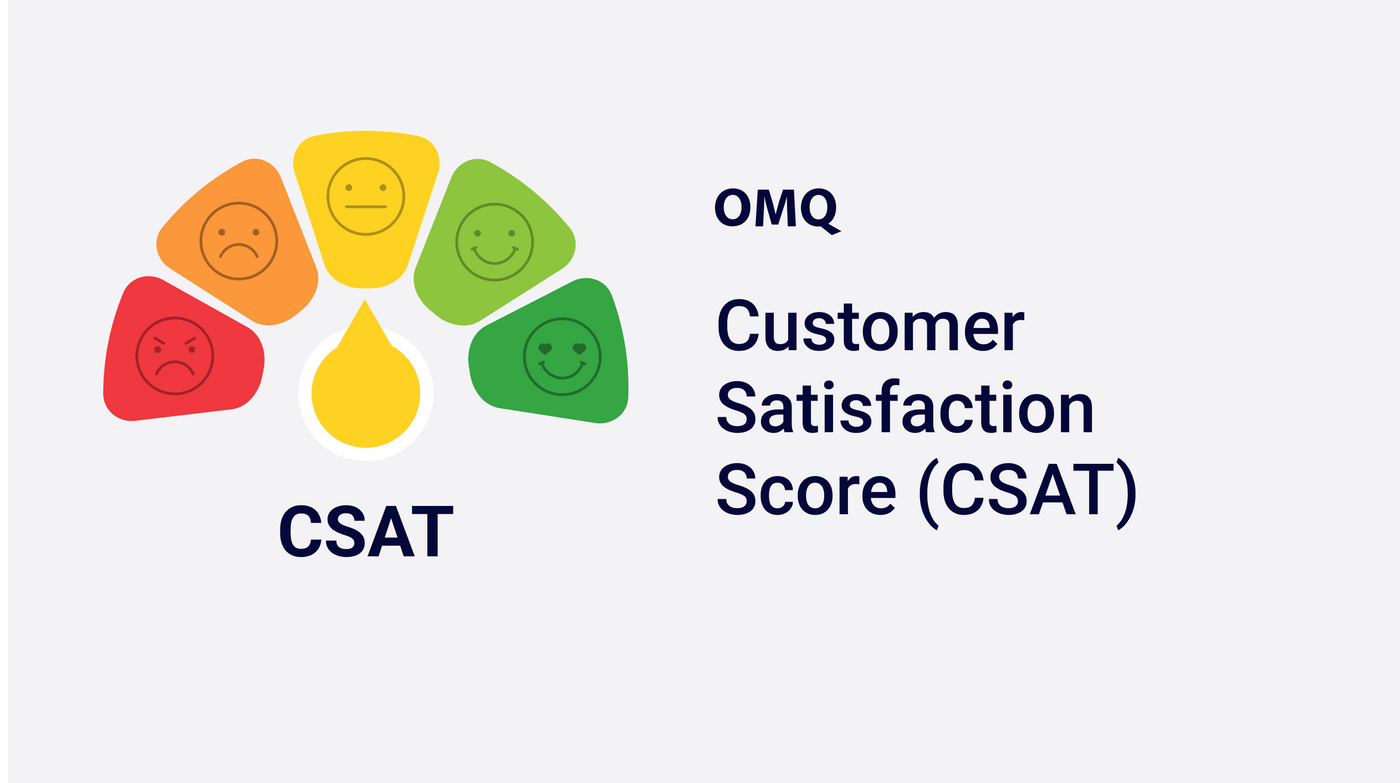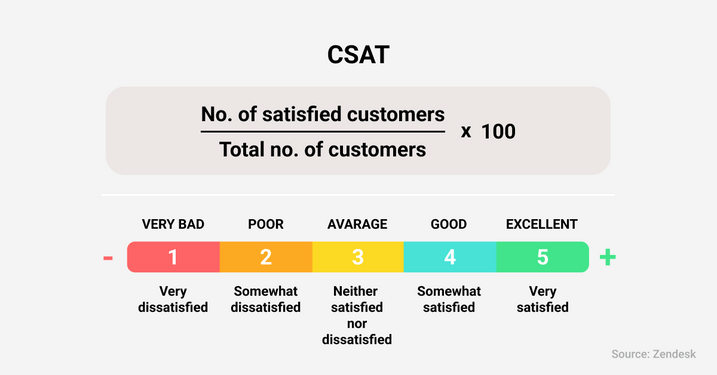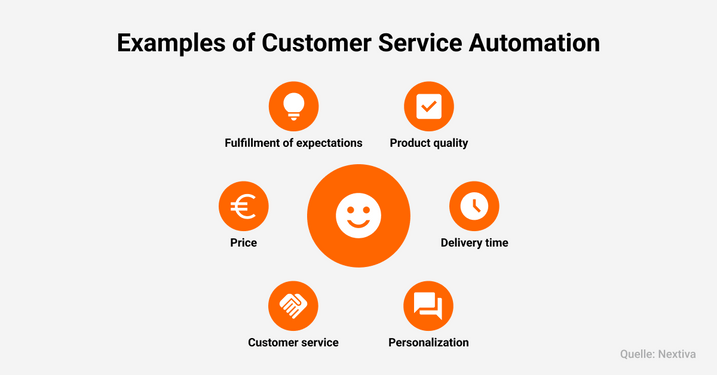Customer Service
Customer Satisfaction Score (CSAT) Simply Explained
The Customer Satisfaction Score (CSAT) measures the satisfaction of your customers. Here you’ll learn how CSAT works, how it is calculated, and why it is important for your business.

The Customer Satisfaction Score (CSAT) is an important metric that companies worldwide use to measure the satisfaction of their customers. This simple but meaningful indicator can help companies improve the quality of their products and services, increase customer loyalty, and expand their market share.
What is the Customer Satisfaction Score (CSAT)?
The CSAT is a metric that measures customer satisfaction with a product, service, or interaction. It is usually determined by a survey in which customers are asked to rate their satisfaction on a scale of 1 to 10 (or sometimes from 1 to 5). The CSAT value is then calculated as a percentage of satisfied customers.
The Importance of CSAT
Measuring customer satisfaction is crucial for any business. A high CSAT score indicates that a company effectively serves its customers and meets or exceeds their expectations.
This can lead to higher customer loyalty, positive word-of-mouth recommendations, and ultimately increased business growth. In contrast, a low CSAT score can indicate problems that need to be addressed to avoid losing customers.
How is the CSAT measured and calculated?
The measurement of the CSAT is usually done through customer surveys that are conducted either after a purchase, an interaction with customer service, or at another relevant time. Customers are asked to rate their satisfaction on a scale of 1 to 10 (or sometimes from 1 to 5).
To calculate the CSAT value, the number of positive responses (usually those who have given a rating of 8 to 10) is divided by the total number of responses and then multiplied by 100 to get a percentage.

How to calculate the CSAT.
Pros and Cons of CSAT
Like any metric, the CSAT has its strengths and weaknesses. Advantages include its simplicity and directness. It’s easy to understand and delivers clear results. It can also be easily adapted to different contexts by changing the questions or the scale.
Disadvantages include that the CSAT often only provides a snapshot of customer satisfaction and does not necessarily show long-term trends or deeper issues. In addition, cultural differences in how people respond to surveys can distort the results.
Best Practices for CSAT Surveys
To get accurate and useful CSAT data, companies should apply some best practices for their surveys:
-
Keep the survey short and concise: Customers are more likely to participate in a survey if it doesn’t take up much of their time.
-
Ask clear and precise questions: Avoid ambiguous or confusing wording to ensure that customers understand your questions correctly.
-
Conduct the survey at the right time: The best time for a CSAT survey is immediately after an interaction or purchase when the customer’s experience is still fresh in their memory.
Overall, the Customer Satisfaction Score (CSAT) is a valuable tool for measuring customer satisfaction. Although it does not cover all aspects of the customer experience, it can help companies recognize their strengths and identify areas for improvement. With careful implementation and analysis, the CSAT can contribute to improving the customer experience and increasing business success.
Improving CSAT with AI and Chatbots
Artificial Intelligence (AI) and chatbots are playing an increasingly important role in customer service and can significantly contribute to improving the Customer Satisfaction Score (CSAT). They offer several benefits that can increase both customer service efficiency and customer satisfaction.
24/7 Availability: AI chatbots are available around the clock, so customers can make their inquiries at any time. This is particularly important in our increasingly connected world where customers expect their concerns to be addressed immediately, regardless of the time of day or day of the week.
Fast Response Times: Chatbots can respond to inquiries in real-time, leading to faster response times. Longer wait times are a common cause of dissatisfaction among customers. By speeding up the response process, chatbots can help improve the CSAT.
Automation of Routine Inquiries: Many customer inquiries are routine and often repeated. AI chatbots can automatically handle this type of inquiry, giving service agents more time to focus on more complex cases.
Personalized Experiences: AI technology can be used to create personalized customer experiences. Chatbots can provide customized recommendations and advice based on previous interactions. This can help increase customer satisfaction and thus the CSAT.
Consistent Customer Experience: Another advantage of chatbots is that they provide a consistent customer experience. Unlike human agents, whose performance can be influenced by a variety of factors, chatbots always deliver the same quality of service.
Overall, AI and chatbots can make a significant contribution to improving the CSAT. However, it’s important to note that they cannot completely replace human customer service representatives. In many cases, human interactions are still essential, especially when it comes to complex inquiries or complaints. Therefore, the introduction of AI and chatbots should be seen as a complement to existing customer service, not as a replacement.

Factors that affect CSAT.


